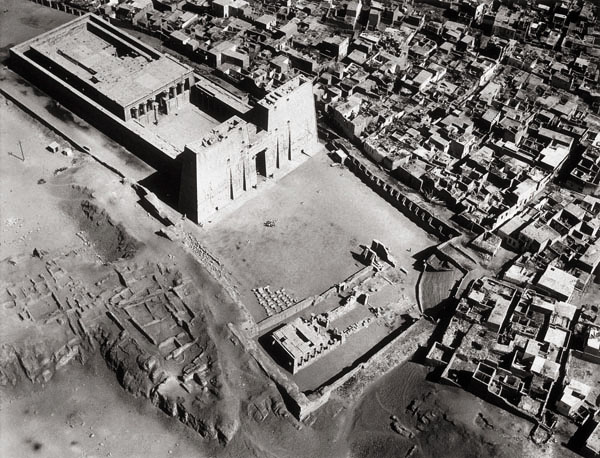Image Details

Marilyn Bridges
The Egyptian Temple of Horus at Edfu, 60 miles south of Thebes, was built between 246 and 51 B.C.E by a series of Ptolemaic kings. This dramatic aerial shot clearly shows the elements common to Egyptian temples, no matter the date or the dynasty. Two massive pylons at the temple’s entrance lead to an open courtyard, from which one passes into a columned front hall (the pronaos, found in Ptolemaic-Roman temples, but not shown in the plan) and then into a hypostyle hall; at the temple’s western end is its inner sanctum (see photo of inner sanctum), containing a cult image of the deity.
This basic plan, according to author David O’Connor, embodies the central tenets of Egyptian cosmology, which remained largely intact over the millennia. The pylons, for instance, represent mountains rimming the world’s edge and blocking our view of the mysterious, divine renewal of life. The dark inner sanctuary represents both the primeval chaos out of which the universe was formed and the netherworld through which the deceased (and the sun) must travel before being reborn.
